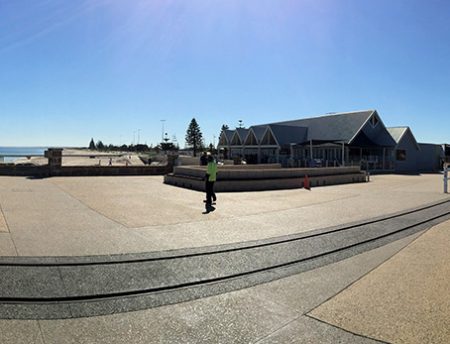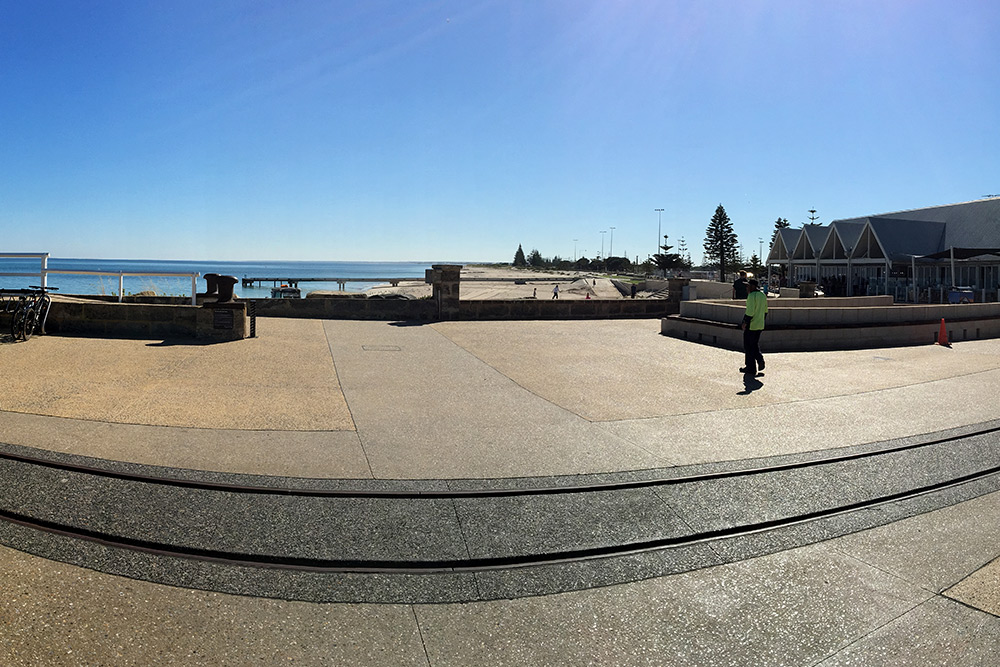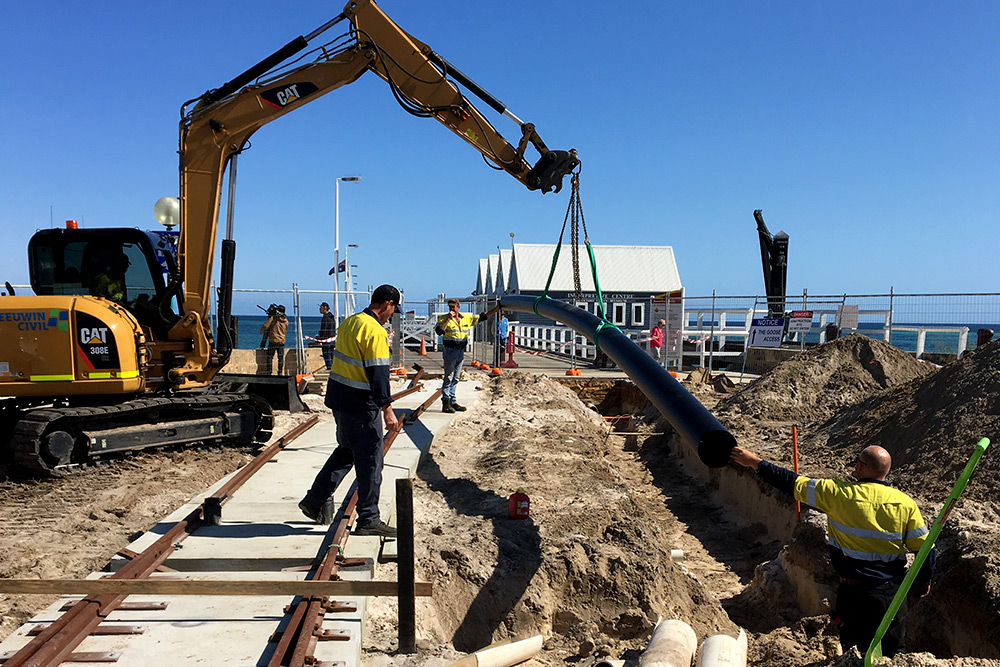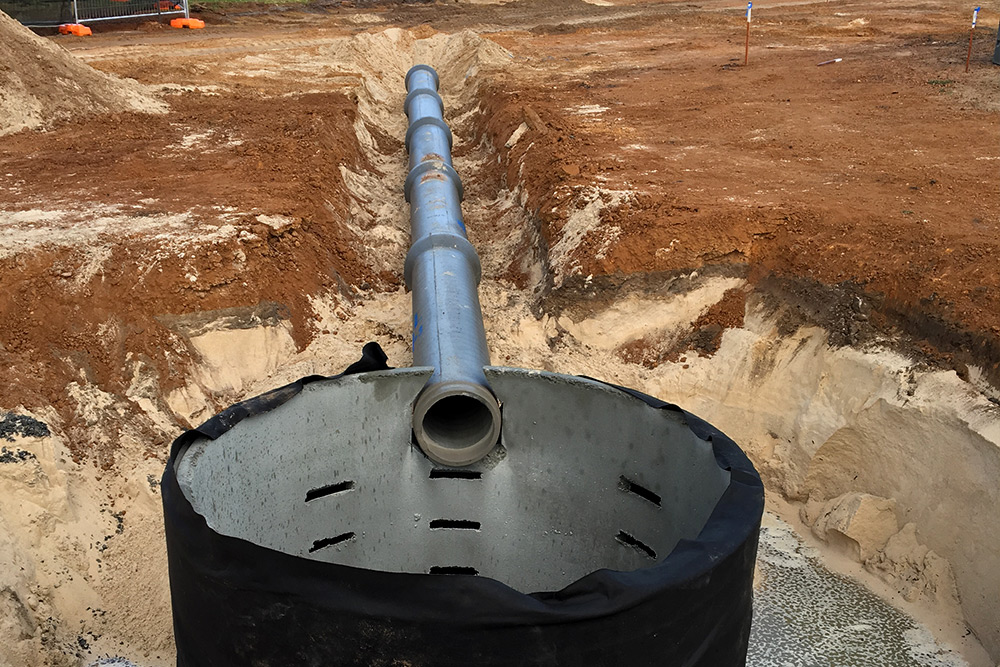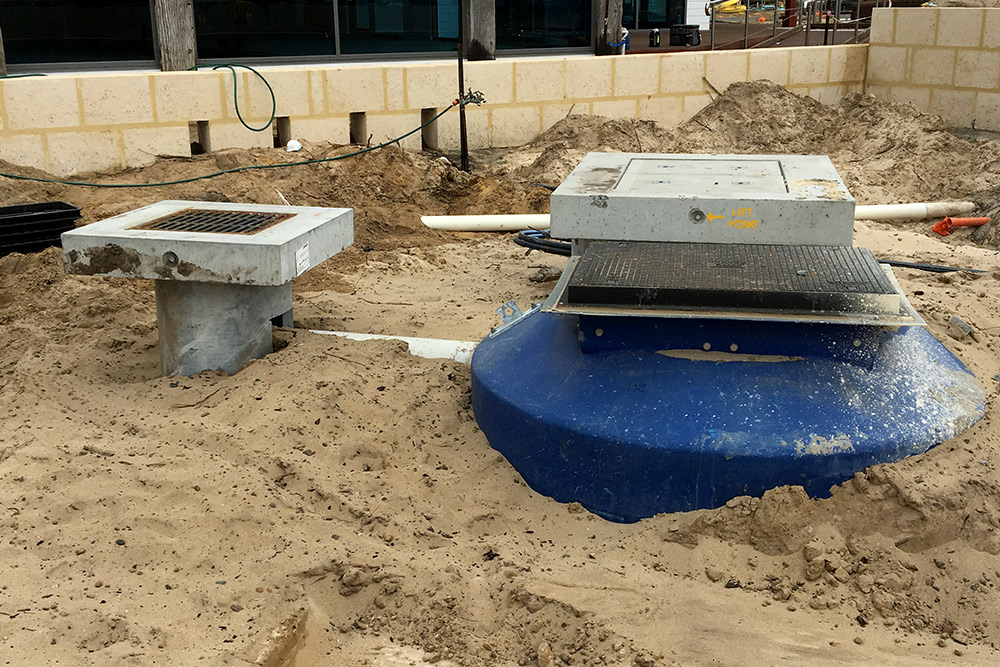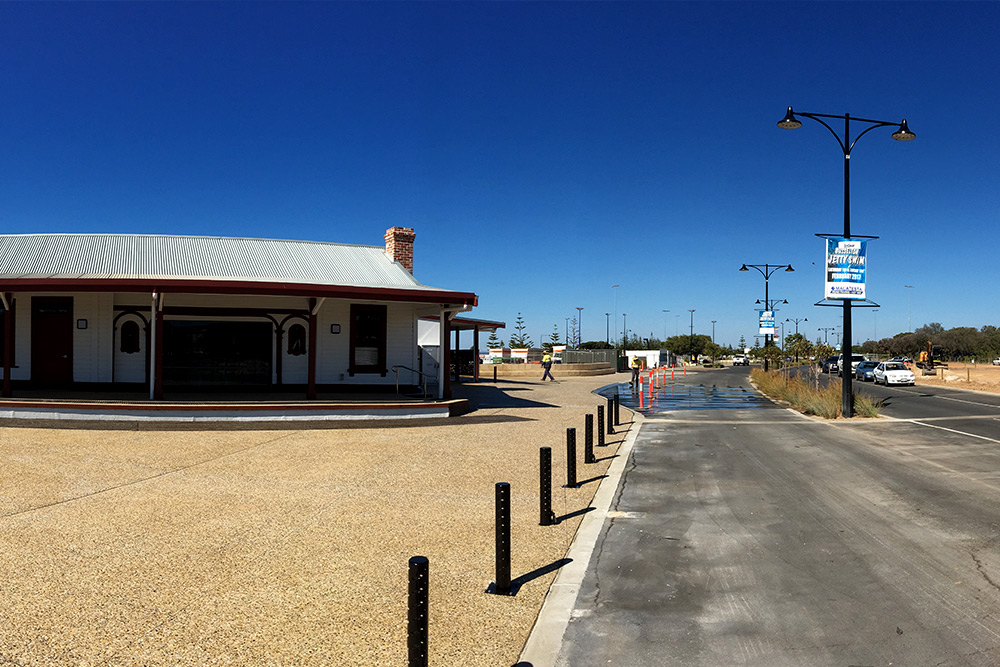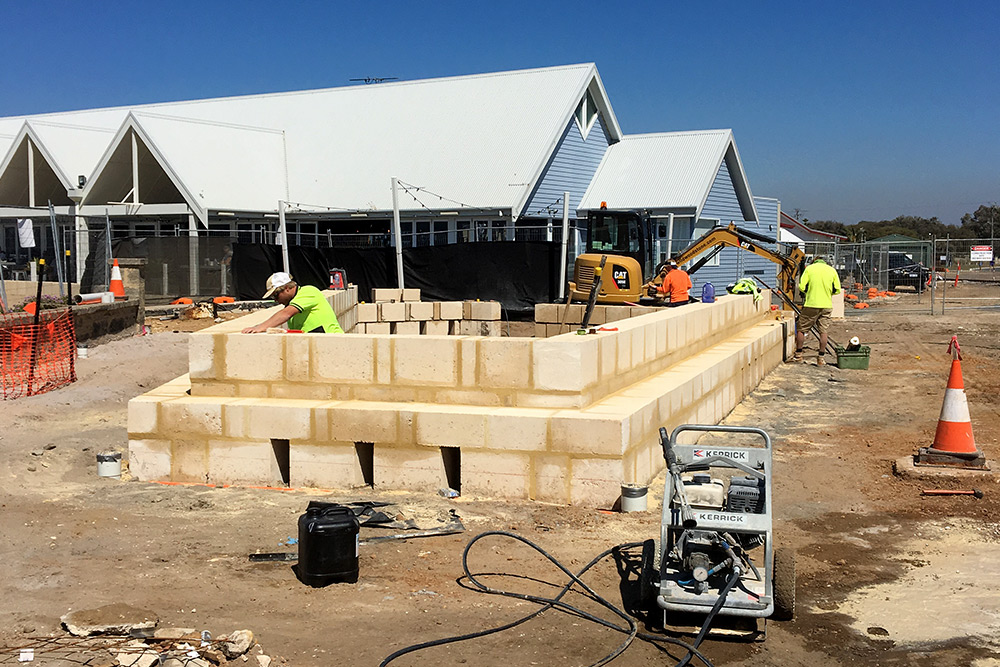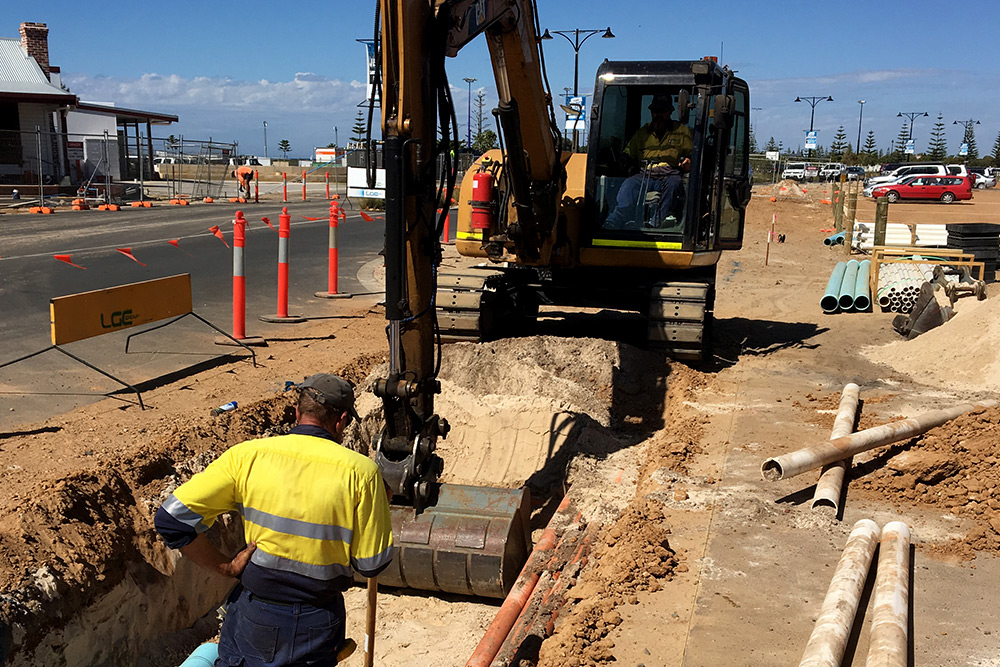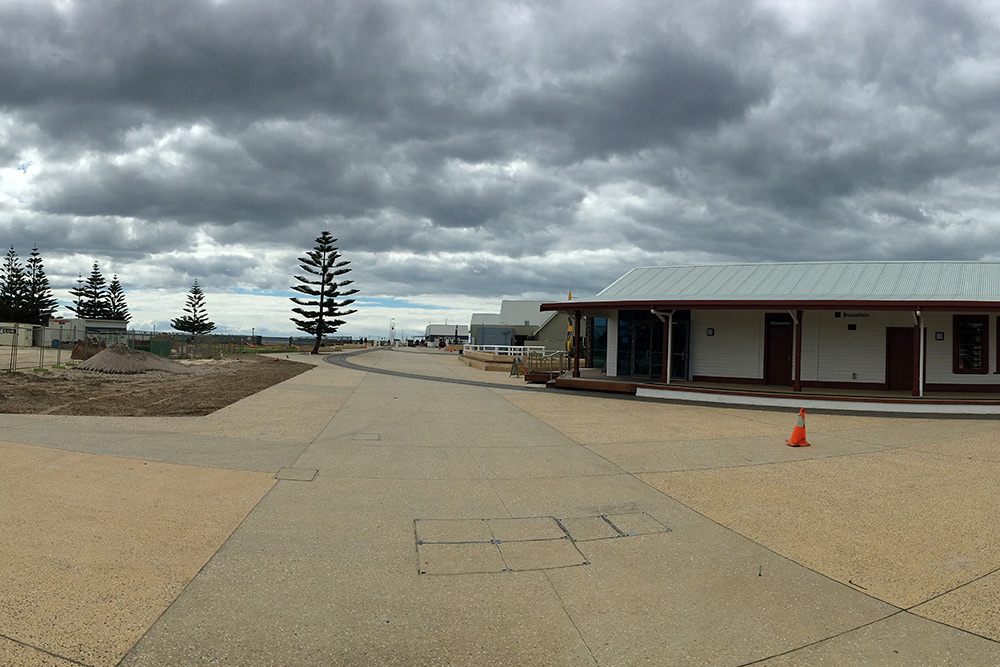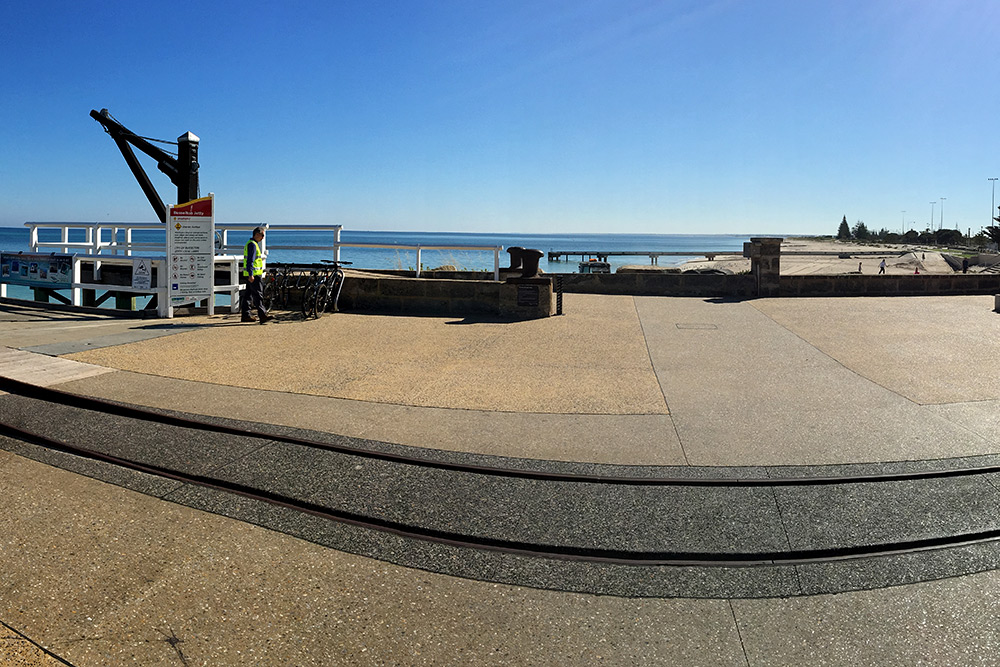Project Name: Busselton Foreshore Underground Infrastructure Construction; Parade West Road Construction & Pedestrian Walkway Construction
Location: Busselton, West Australia
Client: City of Busselton
Project Type: Design & Construct / Road Construction / Underground Infrastructure Installation / Pedestrian Walkway
As part of its master plan to firmly position Busselton as the Events Capital of Regional WA, the City of Busselton is undertaking significant upgrades to the ageing foreshore area immediately adjacent to the Busselton Jetty.
The Busselton Foreshore Development master plan incorporates enhanced public amenities including a skate park; pedestrian activities areas; a youth and community activities building; a refurbished Railway House and Visitor Centre; and refurbished Jetty; as well as provisions for future short stay accommodation, a micro-brewery, restaurant, and more.
Leeuwin Civil, a locally owned and operated civil construction firm were engaged by City of Busselton Major Projects Division to carry out three key pieces of work within the development area. These included the design, supply and installation of major underground infrastructure to accommodate local amenities and future buildings; construction of Foreshore Parade West, a new linking road between Queen Street and Geographe Bay Road; and a Pedestrian Walkway from Marine Terrace to the Busselton Jetty abutment, and associated visitor car parks.
Scope of Works:
- Design and construction of new underground infrastructure to make ready for future foreshore developments e.g. allowing for future hotels, apartments, restaurants and refurbishments at the Jetty and Railway House. Works involved the design, supply and installation of:
- Water mains;
- Gravity and pressure mains to link with 5 sewer pump stations;
- Gas mains;
- Telecom conduits (NBN and other);
- Private comms; and
- Private power.
- Road construction of Foreshore Parade West to provide the final link between Queen Street and Geographe Bay Road. Works included:
- Location of existing services;
- Demolition and clearing;
- Bulk and detailed earthworks;
- Road construction;
- 2 x car parks (for cars, coaches/buses and caravans);
- Concrete kerbs and pram ramps;
- Street lighting and cabling;
- Drainage construction;
- Roundabout construction; and
- Associated landscaping.
- Construction of the Jetty Way pedestrian link, which involved the supply and laying of 3,000m2 of exposed aggregate concrete between Foreshore Parade and the Busselton Jetty abutment, and a new Rail Track slab for the famous Busselton Jetty train. Works include:
- Demolition and clearing;
- Bulk and detailed earthworks;
- Stormwater drainage and irrigation reticulation pipework;
- Rail rafted footing;
- Limestone block walls – special retaining wall rain garden (to disguise two of the sewer pump stations); and
- Street lighting supply and installation.
Key Challenges:
Works were characterised by challenges including:
- Tight timeframes to ensure delivery prior to key annual events including the Iron Man competition and visit of cruise-liner, Queen Mary II;
- Programming complexity due to the overlapping footprints of the three key aspects of works and construction and refurbishment of other interrelated aspects of work adjacent to site (e.g. Railway House);
- Environmental challenges due to the site’s close proximity to the ocean and local
possum population; and - Maintaining access and safety for the thousands of visitors to the foreshore and Jetty area every day.
Program Management:
Leeuwin Civil was selected to deliver the works due to its ability to deliver all elements to a tight and complex schedule; shared vision for the City’s Foreshore area; and cost-effective bid. Complex and carefully managed programming had to be adopted to ensure specific areas of works were completed and handed over in time to host a number of high profile events, including the world title round of Ironman; and the first visit by luxury cruise liner, Queen Mary II carrying 6,000 passengers. The team also had to manage daily movements of the Jetty Train, which had to moved 250m to and from its old shed, across site works, to the Jetty rail every day. This was a complex feat enabled by extremely well-managed programming. www.leeuwincivil.com.au
To enable the best possible outcome for the project, the Client had left some of the designs for the road construction and Jetty Way pedestrian link unfinalised. This presented both opportunities and challenges that had to be carefully managed through a flexible approach.
Ultimately, the approach was very successful, as this enabled Leeuwin to recommend multiple ongoing changes to the design that served to enhance the aesthetic appeal, ensure constructability and enable multiple complex aspects of the project to be delivered more efficiently.
Community & Stakeholder Engagement:
The team ensured early engagement with two local restaurants: The Goose; and The Equinox, in addition to the local tennis club which were all located within the site area. Ensuring best access to these establishments was a high priority to ensure they did not suffer as a consequence of the works, due to lack of access for patrons. This was managed by ensuring clear access, additional signage and the presence of the traffic controllers to ensure pedestrians could get around site easily. Leeuwin Civil also employed two dedicated traffic control personnel based at site to direct visitors around in a safe and welcoming manner.
Environmental:
Due to close proximity to the ocean, very careful attention was paid to containing all materials, especially run-off liquids when washing the exposed aggregate following sealing. Also, to ensure zero risk of run-off, the Project Team kept a close eye on weather forecasts, only sealing and washing down works during prevailing winds.
A local possum population, residing in a significant number of peppermint trees located on site, were carefully protected during underground installations using hand plunking and slinging to protect the root systems and keep the trees in place. This also ensured the local possums remained completely unaffected during works.



